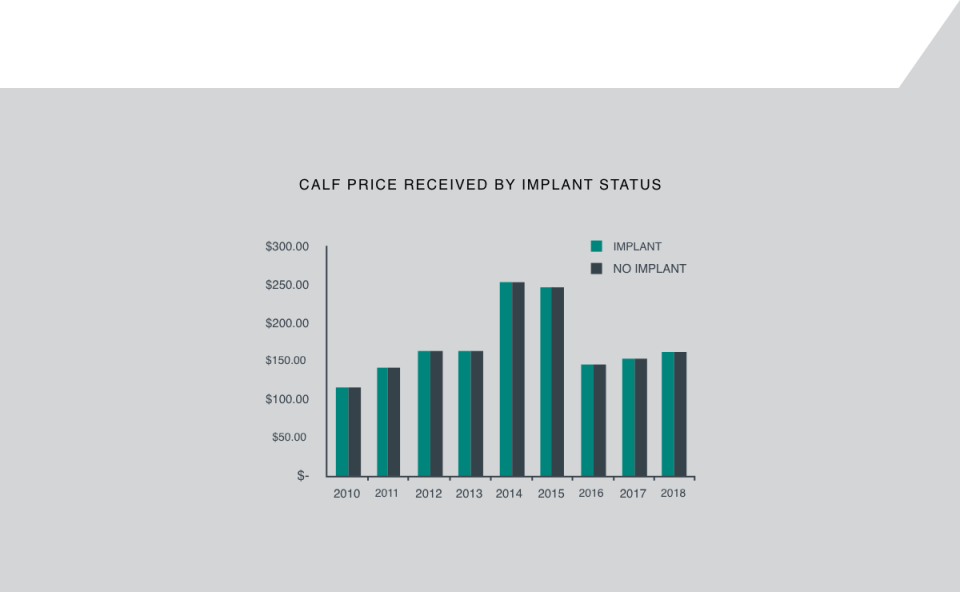FACT:
Cattle implants boost
productivity and revenue.
Implanting is one of the most researched, proven and
consistent technologies that can improve margins for
producers. It also improves sustainability, helping important
resources go further. As a good steward of the land, this is
something you can take pride in.
Scroll down to bust some common myths
surrounding cattle implants.


So why is it that 69% of calves presented for sale
haven’t received an implant? Some common
misperceptions may be to blame.
Myth #1:
Implanting suckling calves has no impact on weaning weight.
Not true.
Suckling calves implanted with RALGRO® (zeranol) demonstrate a 23-lb. average weaning weight advantage over non-implanted calves.1 And although 23 lbs. is the average, data shows weaning weights can actually increase by as much as 35 lbs.


Calf implants set cattle up for continued performance.
In the growing phase, implanted calves saw increased average daily gain
(ADG) as well as improved feed efficiency.2

1Data on file, Merck Animal Health.
2Pritchard, 1999.
Myth #2:
Non-implanted calves earn a premium on sale day.
Not true.
A Superior Livestock data analysis across nine years consistently shows no difference in sale price per hundredweight between implanted calves and
non-implanted calves.3 With roughly the same price per pound, it pays to be the producer with the heavier calf crop.
3Superior Livestock Auction data 2014-2018.

In today’s market, implanting pays off
For an investment of approximately $1.50 per head, implants like RALGRO result in a $30-$50 increase in calf value.

Myth #3:
Non-implanted calves have better performance and quality grade at finishing.
Not true.
A study looked at the carryover effects of implanting and not implanting calves pre-weaning, and then followed both groups through the growing phase on implanted and non-implanted protocols.
Calves implanted with RALGRO entered grower phase 19 lbs. heavier on average – and continued to perform at an improved growth rate throughout the phase.4
4Laudert ST, Matsushima JK, Wary MV. 1981. Effect of Ralgro implants on suckling, growing and finishing cattle.

All cattle can benefit from an implant.
Considering that implants like RALGRO improve ADG by
11%, even the high-performers have something to gain.
2 lb. gain / day x 100 days = 200
lb. gain if not implanted
An 11% improvement with
Ralgro = 22 lbs. additional gain

The bottom line?
Implanting wins.
With the proper protocol, cattle stand to gain an additional 195 lbs. over the course of their lifetime.5 And it starts with choosing the right implant at the cow-calf level.
See how a calf implant like RALGRO can set calves up for long-term performance.
5Capper J.L. 2013. The environmental and economic impact of steroid implant and beta-adrenergic agonist use within U.S. beef production. In: Proceedings of the ADSA-ASAS Joint Annual Meeting, Indianapolis, IN, USA.

IMPORTANT SAFETY INFORMATION: A withdrawal period has not been established for RALGRO in pre-ruminating calves. Do not use in calves to be processed for veal. For additional information, please see the product label.
